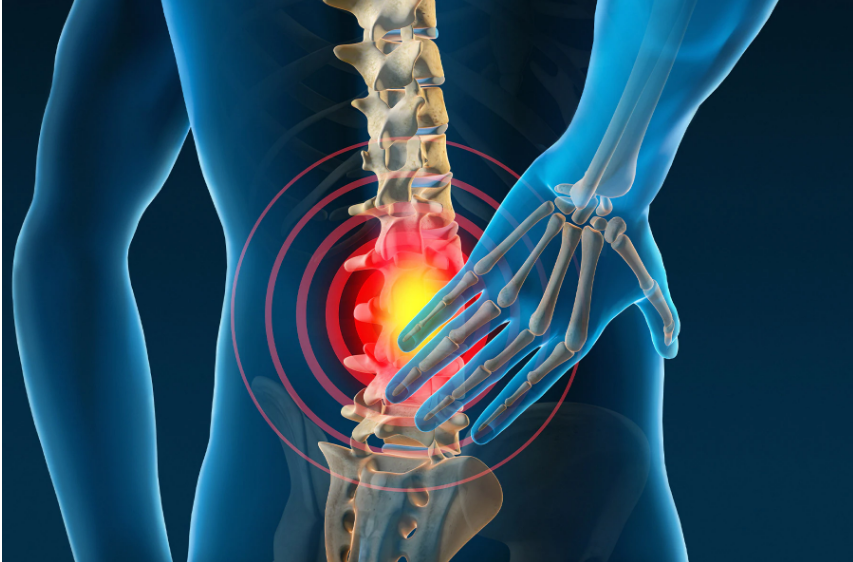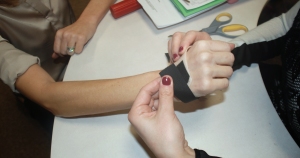
Running is arguably the most basic form of exercise. Runners face many challenges in their life, they get hurt,stay busy and tired. Back pain is very common nowadays not only for runners or athletes, 70% of the population has been facing the same issue. They go to the doctor’s clinic and miss their official and routine work. Sports injuries are also another concept to consider the back pain from muscle aching to a shooting, burning or stabbing sensation. Most back pains gradually improve with home treatment and self care. Repeated heavy lifting or sudden awkward movement cause muscle or ligament strain and spasms. Osteoarthritis can affect lower back pain. Pain can be acute, sub acute or chronic under the categories of muscles, bones, lower back, buttocks and specific sensation is sharp, electric, burning type pain that can originate from any part of the body. When an injury at some point extended break at your movements due to pain but there is good news your muscles have a memory of those past activities. A few things are common if you want to run after acute or chronic back pain. Start with your own unique challenges and requirements to help your body. To get back to running after a long interval follow some important steps:-
Understand The Cause
Whenever a long interval enters in any kind of activity it is difficult to start from the point you left and there must be a cause that why a person left that from schedule. In the case of a runner Runner spine’s vertebrae and discs experience extra pressure, lower back pain due to bending or lifting in high frequency. At the same time, to get back to your recovery track, you should go to the doctor to diagnose why you have back pain. You don’t need any scans if you are going through a short term of pain but if you have a sudden injury you should take your extra care for diagnosing the reason. After this process the doctor will arrange a PT for you, to skip the doctor you can go to the Physical Therapy, A skilled Physical Therapist will be able to access you and provide you with diagnosis and treatment plan. Developing muscle strength and aerobic capacity at rehab will help to reschedule your elapsed exertion.
Don’t let your Injury keep you Down
When you are suffering from an acute back injury, take a rest for a couple of days after bending, twisting or straining. Don’t rest too much time after injury because the more time you take to get comfortable, the more it will feel hard to come back. At the prior times of injury more chances are there to function properly within a week or 2 weeks. In fact unused muscles switch themselves off. For that reason, start walking by the wall as your pain decreases, begin normal and slow movements such as walking around the house, and start slow and regular exercise. Listen to your body if you are feeling any tenderness, communicate with your Physical Therapist who can alleviate pain and regain function. They must focus on the exercises and stretches designed for you in PT sessions.
Celebrate Each Step
Start counting your progress day by day, try warming up under your Healthcare’s treatment plan. A Physical Therapist will also identify your weak points so that he/she can analyse where to give stress and rest so you can handle the pain with comfort. If you have any impact on joints, PT will schedule not only running but runs with biking, swimming which will make cardiovascular endurance without stressing your joints. Sometimes the runners get frustrated as one who was running 40- 50 miles per week is not able to walk around. Be positive, your positive emotions reinforce you to get back in action. Commit yourself to join body strength training sessions in the Rehab Center. Measure day by day progress and praise yourself. Self care works more than healthcare. Your encouragement to yourself will help to design your new road map of success.
Have Patience
Casual Runners or Professional Athletes always want to run as soon as possible. No one is happy by sitting during an injury. Don’t be scared and do not increase your weekly mileage by more than 10% in order to help your body. Keep in mind and be aware to stress the muscles. Your Pt would design a plan for you to improve your blood flow to your muscles. Don’t increase your running speed before your PT’s recommendations. You can continue if pain does not return. PT always designs a healing and training process from walk to run progression, for each new activity take your time as your body is in healing process and if you are going to exert pressure as you were before strain or injury it will cause more stress and take a long time to heal. Let your body adapt. For a couple of months run on the alternative days to allow for recovery and time for the body. Everyone’s recovery time can be different, as the injury caused can take more or less time to recover as compared to other patients with the same injury. PT will help you from walk to run with some additional elliptical, cycling, swimming to mix it up during the week. Chances of reinjury are the biggest risk during or after a painful injury. Start under the guidance of your PT to lessen the risk, that will enhance the progression of running in which PT will include to give strength to previous injured tissue.
Use your Physical Therapy Knowledge
After Rehabilitation when you come back at your home, higher chances of skipping your PT schedule and it hinders the linear progress. Always stay in contact with your Physical Therapy Center and use the plan given by your trainer. Post Rehab, keep in mind your PT is there for you even after you are discharged. Physical Therapy is important to help you get to running as soon as you can. Physical therapists by their equipment analyse the deficiencies in your running style. Therapy team will overdo for your quick recovery with specific therapy techniques. They will educate you on some key concepts for do’s and don’ts. Once or twice a weekly rehab day allows you to keep working at the cause of injury.
Live Smart
Add good habits, avoid lying on one side, get into a neutral position. Don’t look down for a long time without a break. Physical exercises are the dental floss of the running world. Stick to your prescribed physical plan. Runners already know the importance of strong glutes to control your hip rotation and prevent injury pain. Show more attention to your calves, soleus strength.
To Get Back to Running Consider Rules-
-
Don’t run in a row of days, choose alternative days to give your body time to recover.
-
Focus on the duration you are adding day by day.
-
Stop the discomfort and judge your each run.
-
Consider 6-8 Rehabilitation Center meetings to your PT in a month.
-
Practice Patience, Get Strong.
Contact Active Physical Therapy
 Biceps Tendinitis
Biceps Tendinitis Your hands help you in cooking, cleaning, brushing, typing and in every type of daily routine activities that you perform. But you do not notice the importance of hands unless some impairment or deformity makes it difficult for you to use your hands.
Your hands help you in cooking, cleaning, brushing, typing and in every type of daily routine activities that you perform. But you do not notice the importance of hands unless some impairment or deformity makes it difficult for you to use your hands. 


